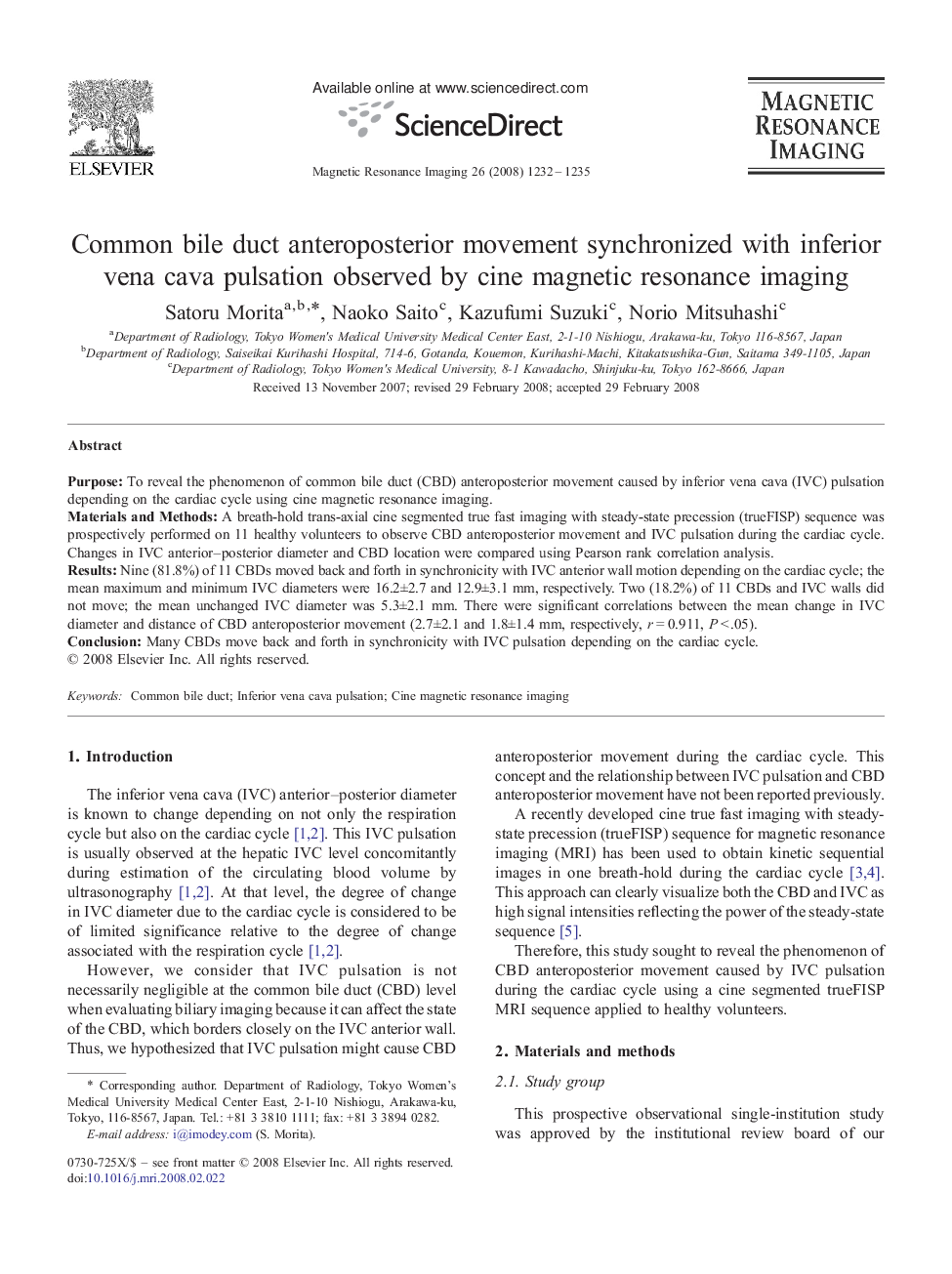| Article ID | Journal | Published Year | Pages | File Type |
|---|---|---|---|---|
| 1807086 | Magnetic Resonance Imaging | 2008 | 4 Pages |
PurposeTo reveal the phenomenon of common bile duct (CBD) anteroposterior movement caused by inferior vena cava (IVC) pulsation depending on the cardiac cycle using cine magnetic resonance imaging.Materials and MethodsA breath-hold trans-axial cine segmented true fast imaging with steady-state precession (trueFISP) sequence was prospectively performed on 11 healthy volunteers to observe CBD anteroposterior movement and IVC pulsation during the cardiac cycle. Changes in IVC anterior–posterior diameter and CBD location were compared using Pearson rank correlation analysis.ResultsNine (81.8%) of 11 CBDs moved back and forth in synchronicity with IVC anterior wall motion depending on the cardiac cycle; the mean maximum and minimum IVC diameters were 16.2±2.7 and 12.9±3.1 mm, respectively. Two (18.2%) of 11 CBDs and IVC walls did not move; the mean unchanged IVC diameter was 5.3±2.1 mm. There were significant correlations between the mean change in IVC diameter and distance of CBD anteroposterior movement (2.7±2.1 and 1.8±1.4 mm, respectively, r=0.911, P<.05).ConclusionMany CBDs move back and forth in synchronicity with IVC pulsation depending on the cardiac cycle.
